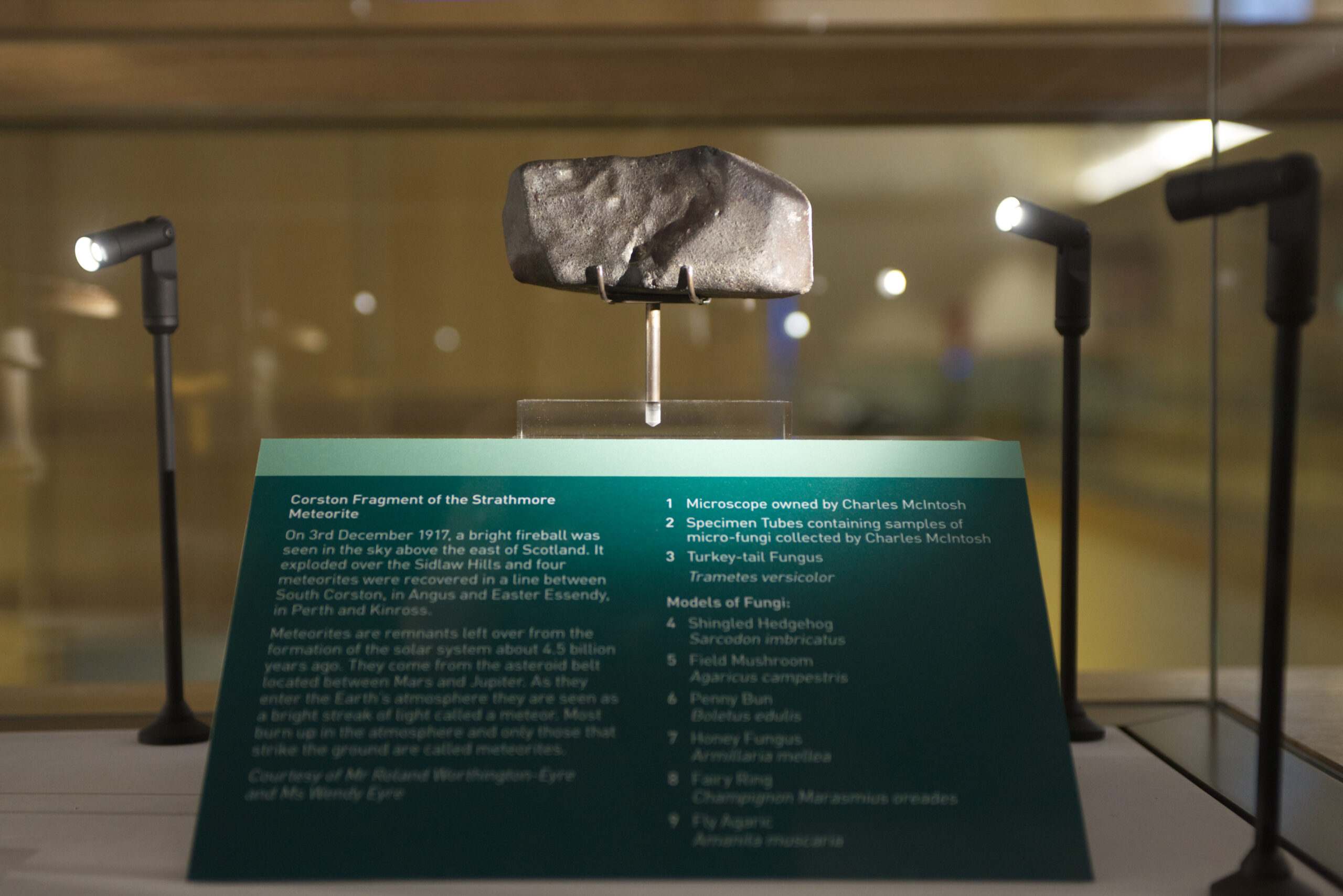Enter a search term above to search our website
Pages
News
Star Objects

On a crisp day in December 1917, a bright ball was suddenly seen in the skies, witnessed by people from County Durham to Aberdeenshire. The fireball passed overhead then hit the ground and exploded, scattering the meteorite into four pieces across Coupar Angus and Blairgowrie. It was a hugely significant and historic event that had wide press coverage at the time.
A meteorite is a solid piece of debris that has travelled from space, surviving its journey through the atmosphere and landing on earth.
The Strathmore meteorite is the largest ever recorded in Scotland. Four fragments were recovered and have become known by the places they landed in: Corston, Keithick, Carsie and Easter Essendy – this last one was the biggest fragment, weighing 22lb. Workers on the Easter Essendy farm heard a heavy thud and noticed a flock of sheep scattering away.
The fragment on show in Perth Museum is from the most south-easterly of the four fall sites; the farm of South Corston, 3km south east of Coupar Angus. It fell on to the lawn about 50m from the farmhouse and was the last of the fragments to be recovered. Farm hands working in a nearby field were aware of something falling near the house but nothing was found until four days later, when it was discovered by the gardener, Mr William Duff, on 7 December. The impact made a hole in the ground about 125mm wide and 150mm deep.